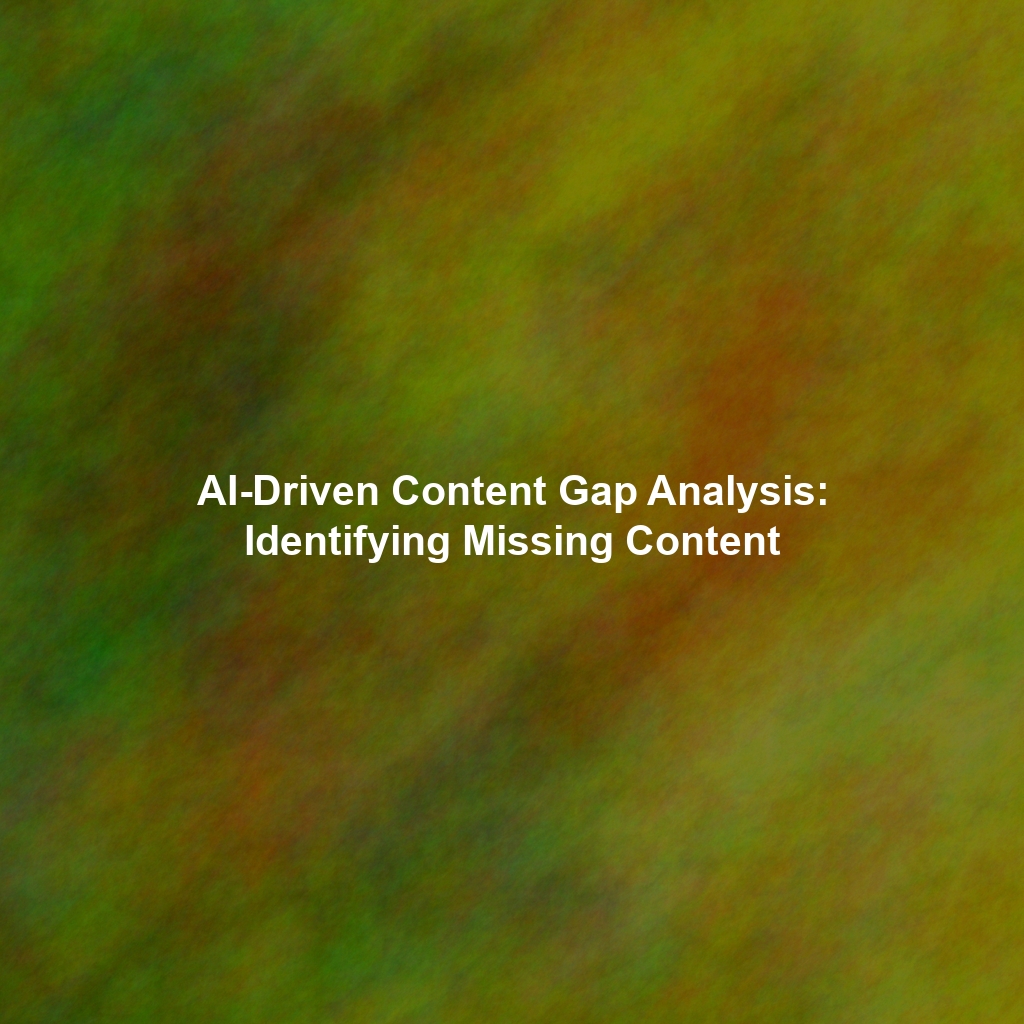Understanding the Investment: A Granular Breakdown of Costs for Strategic Allocation
Before any meaningful calculation of ROI can commence, it is critically important to establish a precise and exhaustive understanding of your total initial investment. This extends far beyond the mere cost of the interactive tool or platform itself, encompassing every facet of production, development, and subsequent promotion. A granular breakdown of these costs ensures accurate financial modeling and transparent reporting.
Initial Investment and Production Costs: The Foundation of Creation
This category includes all direct expenditures related to the conceptualization, design, development, and testing of your interactive content. A thorough accounting here is crucial for accurate ROI calculation.
- Software or Platform Costs: This comprises recurring subscription fees for specialized interactive content creation platforms (e.g., Outgrow, Typeform, Qzzr, or custom development frameworks). Factor in any one-time setup fees, enterprise licensing costs, or premium feature access required for your specific campaign objectives.
- Design and Development Expenses: Allocate budget for professional graphic design (for visual appeal and brand consistency), user interface (UI) development (for intuitive navigation and interaction), and any custom programming or integration work required to bring your interactive vision to life. This may involve assessing the cost-effectiveness of outsourcing these functions versus leveraging in-house resources.
- Content Creation and Asset Development: This encompasses the time, talent, and resources dedicated to crafting the core elements of the interactive experience. This includes writing compelling copy, developing engaging visuals (high-quality images, videos, animations, custom illustrations), and meticulously creating the interactive components themselves (e.g., quiz questions, poll options, calculator logic, assessment criteria, branching narratives).
- Testing and Quality Assurance (QA): A critical, often underestimated, component. Budget for rigorous testing across various devices (desktop, tablet, smartphone), operating systems, and browser environments to ensure flawless functionality, optimal responsiveness, and a truly seamless, bug-free user experience. This proactive investment mitigates negative user sentiment and potential abandonment.
- Human Capital Investment: Quantify the internal labor costs associated with project management, content strategy, data analysis, and any other human resources directly involved in the planning and execution phases. This includes salaries, benefits, and overhead for the time dedicated to the project.
Promotional Expenses: Maximizing Reach and Engagement
Creating exceptional interactive content is only half of the strategic equation; its true impact is realized through effective and targeted promotion to reach your intended audience. These costs are integral to the overall investment and must be included in your ROI calculation.
- Paid Advertising Spend: Allocate budget for driving targeted traffic to your interactive content through various paid channels. This includes platforms such as Google Ads (Search and Display Networks), social media advertising (e.g., Facebook Ads, LinkedIn Ads, X Ads, TikTok Ads, Instagram Ads), native advertising platforms, and programmatic display. Precise targeting ensures efficient ad spend.
- Email Marketing Costs: Account for expenses associated with developing and executing email campaigns designed to promote your interactive content to your existing subscriber list. This includes email service provider (ESP) fees, design costs for email templates, and the time invested in crafting compelling email copy and segmentation strategies.
- Organic Social Media Marketing: While not a direct “paid” expense in the same vein as advertising, quantify the time and resources dedicated to promoting the interactive content organically across your social media platforms. This includes strategic content creation for social posts, active community management, and potential influencer outreach efforts to amplify reach through earned media.
- SEO Optimization Efforts: Budget for the ongoing optimization of your interactive content for search engines. This encompasses meticulous keyword research to identify high-intent queries, on-page optimization of the interactive page itself (title tags, meta descriptions, headings, content structure), and strategic link building efforts to acquire high-quality backlinks, thereby enhancing organic visibility and discoverability.
Projecting Returns: Identifying Key Performance Indicators (KPIs) for Measurable Impact
Once your investment is meticulously quantified, the next critical step is to project potential returns by identifying Key Performance Indicators (KPIs) that are directly aligned with your overarching marketing and business objectives. These metrics will serve as the benchmarks for evaluating the success and ROI of your interactive content campaigns.
1. Lead Generation and Customer Acquisition: Driving the Sales Funnel
If the primary objective of your interactive content is to generate qualified leads and ultimately acquire new customers, the following metrics are paramount for demonstrating tangible business impact:
- Number of Leads Generated: The raw count of users who complete a lead capture form or provide their contact information within the interactive experience. This is a direct measure of the content’s effectiveness in attracting prospective customers.
- Conversion Rate (Lead): The percentage of users who interact with the content who subsequently become qualified leads. This indicates the efficiency of the interactive experience in converting engagement into actionable prospects.
- Cost Per Lead (CPL): A crucial efficiency metric, calculated by dividing your total investment (production + promotion costs) by the total number of leads generated. A lower CPL indicates a more cost-effective lead generation strategy.
- Customer Acquisition Cost (CAC): The total cost associated with acquiring a new paying customer, derived from the leads generated by the interactive content. This metric connects your content efforts directly to revenue generation.
- Customer Lifetime Value (CLTV): An estimation of the total revenue a new customer is expected to generate over the entire duration of their relationship with your business. Interactive content that attracts high-quality, loyal customers will demonstrate a superior CLTV, showcasing long-term ROI.
2. Engagement and Brand Awareness: Cultivating Mindshare and Loyalty
If your strategic goals are centered on increasing audience engagement, enhancing brand awareness, and fostering brand loyalty, the following metrics provide critical insights into the content’s performance:
- Time Spent on Page (Dwell Time): The average duration users are actively engaging with your interactive content. Longer dwell times indicate higher levels of interest and immersion, signaling valuable content to search engines.
- Completion Rate: The percentage of users who successfully complete the entire interactive experience (e.g., finish a multi-question quiz, complete an assessment, navigate through all stages of a calculator). A high completion rate signifies compelling content and intuitive design.
- Social Shares and Virality: The frequency with which your interactive content is shared across social media platforms. High share counts indicate strong audience resonance and organic amplification, extending your brand’s reach without additional paid promotion.
- Website Traffic (Organic & Referral): Monitor increases in overall website traffic, particularly organic traffic from search engines and referral traffic from social media or other linking sites, directly attributable to the launch and promotion of the interactive content.
- Brand Mentions and Sentiment: Track mentions of your brand across online channels (social media, forums, news sites) and analyze the sentiment surrounding these mentions. An increase in positive brand mentions indicates enhanced brand awareness and reputation.
- Repeat Visits: Measure how often users return to engage with your interactive content or explore other areas of your site after their initial interaction. This signals brand loyalty and sustained interest.
3. Sales and Revenue Generation: Direct Financial Impact
For interactive content specifically designed to directly drive sales and generate revenue, these metrics provide the most direct measure of financial success:
- Click-Through Rate (CTR) to Product/Sales Pages: The percentage of users who click on explicit calls to action (CTAs) embedded within the interactive content that lead to product pages, service pages, or e-commerce listings. A high CTR indicates effective persuasion.
- Conversion Rate (Sales): The percentage of users who click on those CTAs and subsequently complete a purchase or a desired revenue-generating action. This is the ultimate measure of direct sales impact.
- Revenue Generated: The total monetary value of sales directly attributable to the interactive content campaign. Implement robust tracking and attribution models to accurately assign revenue.
- Average Order Value (AOV): Analyze whether the average order value of purchases influenced by interactive content has increased. Interactive experiences, particularly those offering personalized recommendations, can often upsell or cross-sell, thereby boosting AOV.
- Return on Ad Spend (ROAS): If paid advertising is used, ROAS measures the revenue generated for every dollar spent on ads targeting interactive content.
Calculating ROI: The Fundamental Financial Equation
The calculation of Return on Investment (ROI) provides a clear, quantifiable measure of the financial efficiency of your interactive content campaigns. It answers the fundamental question: for every dollar invested, how many dollars were returned?
The basic and universally applicable formula for calculating ROI is:
ROI = (Revenue-Cost)/Cost
Practical Example:
Let’s assume your interactive content campaign involved a total investment of $5,000 (encompassing all production and promotional costs, as detailed above). This campaign subsequently generated $15,000 in directly attributable revenue through lead conversions and sales.
Using the formula:
ROI = ($15000-5000)/5000 = 2 = 200%
This result of 200% ROI signifies that for every $1 invested in the interactive content campaign, your organization generated $2 in revenue. This is a clear, compelling financial justification for the investment.
It is important to note that while this formula provides a core financial metric, a holistic ROI assessment should also consider the qualitative benefits (e.g., enhanced brand loyalty, improved data collection, increased brand awareness) that may not be directly quantifiable in immediate revenue but contribute significantly to long-term business value.
Justifying the Investment: Building a Compelling Case for Stakeholders
To successfully secure budget and organizational buy-in for interactive content initiatives, merely presenting an ROI calculation is often insufficient. You must construct a compelling, multi-faceted case that articulates the strategic value, quantifies potential returns, and proactively addresses perceived risks. My experience in finance and as a former CFO emphasizes the need for clear, outcome-focused justifications that speak directly to key business objectives and ROI.
A Strategic Framework for Justification:
- Unwavering Alignment with Core Business Goals: Explicitly demonstrate how the proposed interactive content campaign will directly contribute to achieving overarching business objectives. For instance, if the company’s Q3 goal is a 10% increase in MQLs (Marketing Qualified Leads), show how the interactive quiz will generate X number of MQLs at a projected CPL of Y, thereby contributing Z% to the overall goal. Connect the interactive content directly to the P&L.
- Highlight the Unique Value Proposition of Interactive Content: Articulate why interactive content is uniquely positioned to achieve these goals more effectively than traditional static content. Emphasize its inherent advantages, such as significantly increased user engagement, demonstrably higher conversion rates (often 2-3x higher than static forms), superior first-party data collection capabilities, and its potential for viral sharing.
- Present Data-Driven Projected ROI with Prudence: Utilize historical data (if available), industry benchmarks, and conservative, data-driven projections to illustrate the potential return on investment. Be realistic in your estimates, acknowledging variables, and avoid overly optimistic forecasts. Present a range of potential outcomes (e.g., “we project an ROI between 150% and 300%”).
- Proactively Address Potential Risks and Outline Mitigation Strategies: Demonstrate a comprehensive understanding of potential challenges (e.g., higher initial production costs, technical complexities, lower-than-expected engagement). Crucially, outline clear, actionable mitigation strategies for each identified risk. This proactive approach builds confidence and demonstrates strategic foresight.
- Showcase Compelling Success Stories and Industry Benchmarks: Provide concrete examples of successful interactive content campaigns from other reputable companies, particularly those within your industry or a similar business model. Highlight their achieved ROI, engagement metrics, and how these campaigns contributed to their business objectives. This provides social proof and validates the effectiveness of the approach.
- Emphasize Long-Term Value and Strategic Assets: Beyond immediate ROI, articulate the long-term, compounding benefits of interactive content. This includes its ability to build stronger brand loyalty, generate invaluable first-party data for future personalization, improve SEO by signaling high engagement, and create evergreen assets that continue to deliver value over time.
Illustrative Examples of Highly Successful Interactive Content Campaigns:
Observing successful implementations provides concrete validation for the strategic value of interactive content:
- HubSpot’s Website Grader: This iconic, free interactive tool analyzes a user’s website performance (SEO, mobile, security, performance) and provides personalized recommendations for improvement. It serves as an incredibly powerful lead generation engine for HubSpot’s marketing automation software, demonstrating value upfront and capturing qualified leads at scale.
- BuzzFeed’s Quizzes: While often perceived as purely entertainment-driven, BuzzFeed’s highly engaging and shareable quizzes (e.g., “Which ‘Friends’ Character Are You?”) are masterclasses in driving massive website traffic, increasing dwell time, and generating significant brand awareness through virality. They are designed for maximum social amplification.
- The New York Times’ Dialect Quiz: This highly sophisticated interactive quiz identifies a user’s regional dialect based on their word choices. It became a viral sensation, generating immense engagement, brand awareness for the NYT, and showcasing their commitment to data-driven journalism in an accessible format. It demonstrated the power of interactive data visualization.
- Calculators and Assessments (e.g., ROI Calculators, Fitness Assessments): Many B2B SaaS companies offer interactive ROI calculators (e.g., “Calculate Your Potential Savings with Our Software”) that allow prospective customers to input their data and see personalized financial benefits. Similarly, fitness or health brands might offer interactive assessments (“What’s Your Fitness Level?”) that provide personalized recommendations. These tools offer immediate, personalized value and are powerful lead magnets.
The Enduring Value: Long-Term Strategic Benefits of Interactive Experiences
Interactive content is far more than a short-term tactical play; it is a strategic asset capable of delivering profound and compounding long-term value that extends well beyond immediate campaign metrics. Its inherent ability to foster deeper engagement translates into sustained business advantages.
- Fortified Brand Loyalty and Advocacy: Engaging, personalized, and valuable interactive experiences create a much stronger emotional connection between your brand and your audience. This deeper connection cultivates brand loyalty, encourages repeat engagement, and transforms satisfied users into enthusiastic brand advocates, driving organic word-of-mouth marketing.
- Rich First-Party Data Collection: Interactive content is a powerful mechanism for gathering invaluable first-party data about your audience’s preferences, needs, behaviors, and pain points. Unlike third-party data, this directly collected information is highly accurate, proprietary, and can be leveraged for hyper-personalization of future marketing efforts, product development, and sales strategies.
- Enhanced SEO Performance through Engagement Signals: Search engines increasingly prioritize user experience signals. Interactive content, by its very nature, leads to higher dwell times, lower bounce rates, and increased social shares—all strong positive signals that indicate content quality and relevance to search engines. This directly contributes to improved organic search rankings and sustained visibility.
- Creation of Evergreen Content Assets: Certain types of interactive content, such as calculators, diagnostic assessments, comprehensive quizzes (if regularly updated), and interactive guides, possess inherent longevity. They remain relevant and valuable to users for extended periods, continuously attracting organic traffic and generating leads long after their initial publication. This creates enduring digital assets that deliver compounding ROI without continuous re-investment in new content creation.
- Differentiation in a Crowded Market: In a content-saturated digital landscape, interactive experiences stand out. They provide a unique, memorable, and often delightful experience that differentiates your brand from competitors relying solely on static content, thereby capturing greater mindshare and market attention.
Conclusion: Interactive Content as a High-ROI Strategic Imperative
Interactive content is unequivocally a powerful marketing tool with the demonstrable capacity to deliver significant and sustainable Return on Investment. By meticulously planning your budget, rigorously tracking key performance indicators that align with your strategic objectives, and constructing a compelling, data-driven case for investment, your organization can successfully implement interactive content campaigns that not only drive immediate results but also cultivate long-term brand loyalty and generate invaluable insights.
Remember to maintain an unwavering focus on providing genuine, personalized value to your audience, consistently creating highly engaging experiences, and continuously optimizing your campaigns based on performance data for maximum impact. Embracing interactive content is not merely an option; it is a strategic imperative for brands seeking to differentiate, deepen engagement, and achieve superior ROI in the evolving digital marketing landscape. To explore how Content Hurricane can specifically help your company generate high-quality, expert-level content at scale and significantly increase inbound leads, consider trying out our free trial.
#InteractiveContent #MarketingROI #ContentMarketing #DigitalStrategy #LeadGeneration #BrandEngagement #SEO #DataDrivenMarketing
 Skip to content
Skip to content

